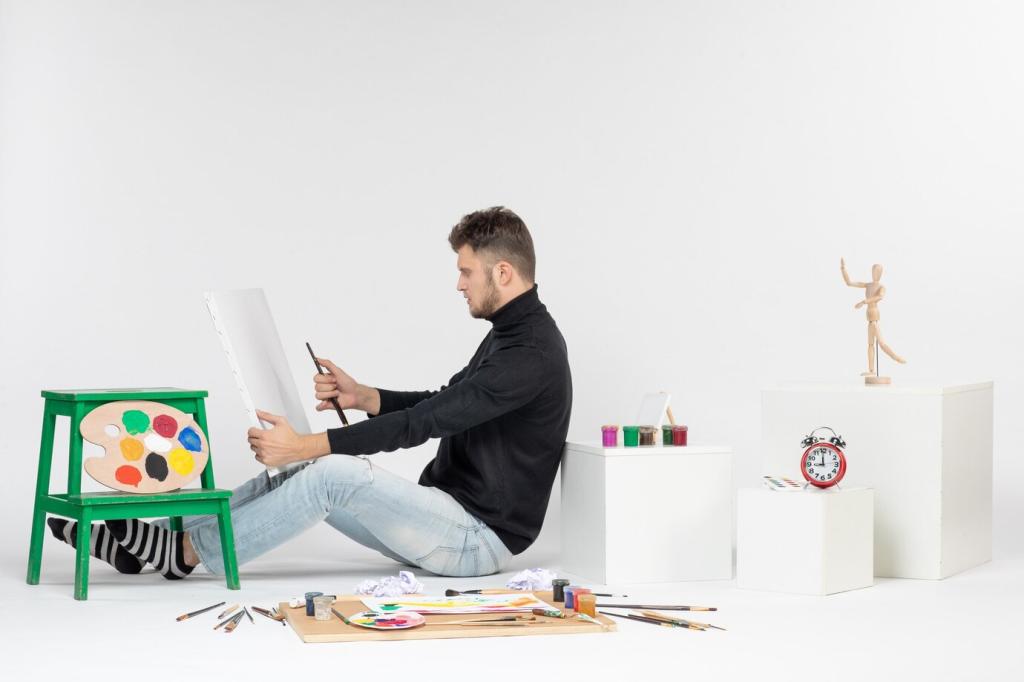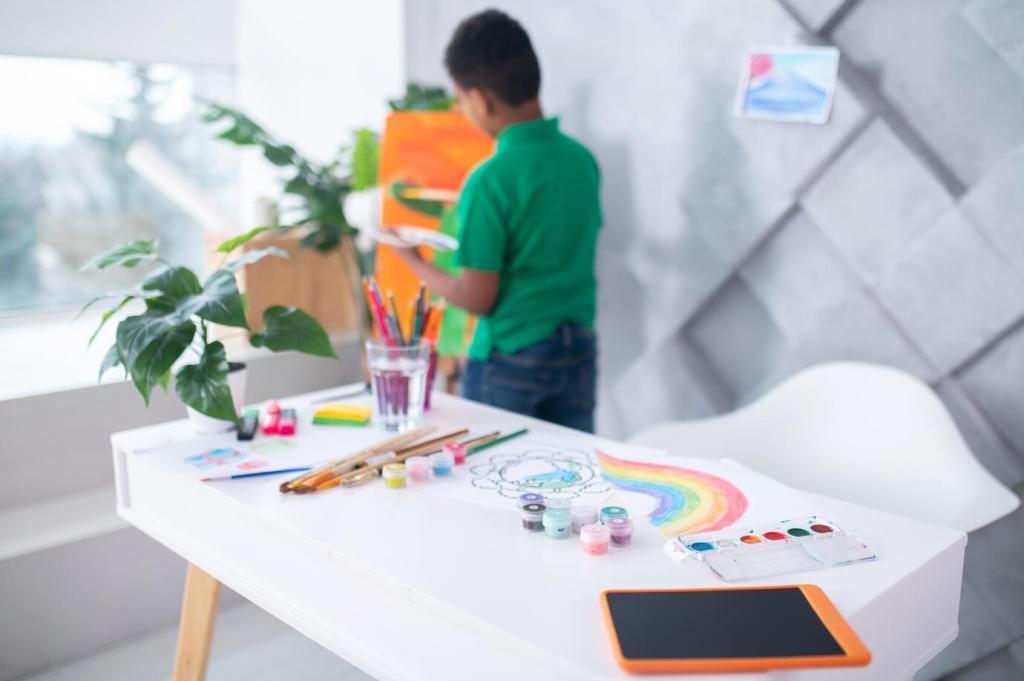Enhancing Cityscapes with Color Theory
Chosen theme: Enhancing Cityscapes with Color Theory. Discover how hue, contrast, and light can transform everyday streets into welcoming stages for daily life. We mix practical frameworks, field stories, and ready-to-apply ideas you can test on your block. Share your observations and subscribe to receive weekly palettes, interviews, and case studies.

Warm and Cool Balances in Public Squares
Warm hues, like terracotta and amber, invite lingering in plazas, while cool blues and greens offer visual relief along shaded corridors. The magic lies in balance: pairing sunlit seats with cooler surrounding planes. Tell us where a warm–cool pairing changed how you moved through a square, even for just a minute.

Saturation, Safety, and Speed
Highly saturated colors communicate urgency and motion, which is why crosswalk beacons and cycle lanes often feel faster underfoot. Softer mid-tones slow the experience, encouraging browsing, conversation, and care. We repainted a lively alley in calmer hues and watched cyclists ease off their pace. What did you notice locally?

Cultural Memory and Meaning
Colors carry layered cultural meanings. A maritime district might adopt deep ultramarines that echo ships’ hulls, while a market favors turmeric, chili, and papaya tones. When palettes reflect memory, people navigate intuitively. Share one color your neighborhood associates with pride, festivals, or the stories grandparents still tell.
Palette Principles for Streets and Facades
Complementary pairs, like teal and coral or blue and orange, create magnetic nodes at intersections, libraries, and transit entries. Use the accent on thresholds, rails, and wayfinding, not entire facades. Try a temporary stencil test before committing. Which corner near you deserves a confident, complementary pop?
Palette Principles for Streets and Facades
Analogous palettes—three neighbors on the color wheel—reduce visual fatigue across long residential blocks. Olive, moss, and sage keep rhythms calm, letting textures and shadows do the storytelling. We love subtle facade gradients that shift half a step every doorway. Subscribe for downloadable street-length swatch sets to pilot.

Transit Lines and Chromatic Coding
Clear chromatic codes turn complex systems into friendly patterns. Assign distinct hues that remain consistent on maps, platform edges, vehicles, and apps. Avoid red–green conflicts for color-blind riders, and pair colors with shapes. A child once navigated downtown solo by “the purple line.” That is legible design.
Contrast Ratios for Readability
Readability is measurable. Follow contrast ratios near WCAG 2.1 guidance—around 4.5:1 for body text—to keep signs legible in glare and rain. Favor matte finishes, generous letterspacing, and simplified palettes. Test your stop: take a smartphone photo and grayscale it. Can your eye still parse the message quickly?


Light, Temperature, and Time
Color temperature changes mood. 2700K feels intimate on stoops and plazas; 3000–3500K balances hospitality and alertness for sidewalks; 4000K sharpens task areas. Pilot a small run and survey users before scaling. Should your main street lean candlelit warm or contemporary crisp? Vote in our quick poll today.
Light, Temperature, and Time
Programmable lighting lets a square celebrate festivals without repainting. Limit palettes to two hero hues plus a soft neutral to avoid chaos. Schedule subtle transitions, not dizzying chases, and match cultural calendars respectfully. Tag us when your town tunes its lights for a parade, market, or midnight run.

A Mural Under the Overpass
A drab underpass near our studio once felt like a shortcut, not a place. After a community mural introduced citrus yellows against deep indigo, weekend foot traffic blossomed into pop-up stalls. The colors caught sunlight pooling beneath girders. Seen a hidden spot revived by color? Tell us the story.

Co-Designing Palettes with Residents
Great palettes are co-authored. Host walkshops, gather objects with emotional value, and vote on swatches in daylight, shade, and drizzle. Children often pick sunrise colors adults overlook, and those become beloved landmarks. If you run a neighborhood group, message us to borrow our printable palette toolkit.
Nature, Materials, and Contextual Color
Nature already composes. Pair leafy greens with bark browns, then add a restrained accent—teal benches or saffron planters—to orchestrate restfulness without monotony. When pavement inherits hues from nearby canopies, heat glare drops and attention shifts to faces. Share your favorite park where the palette simply feels right.

Nature, Materials, and Contextual Color
Water doubles color. Blues deepen under overcast skies and explode near sunset, tinting neighboring walls. Highly reflective glass can amplify or scramble these effects, so calibrate facade hues to prevent glare. If your waterfront signage vanishes at dusk, try cooler blues edged with warm, reflective trim.
